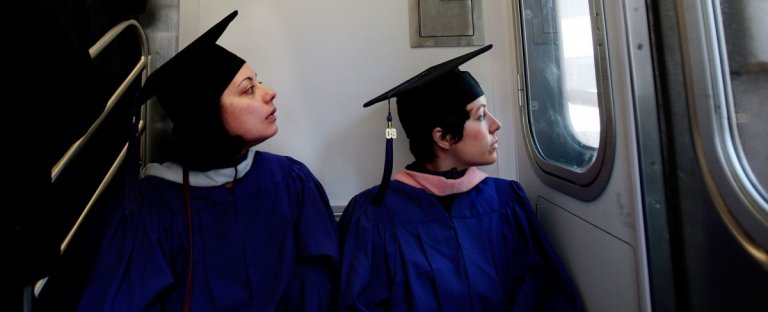
When it comes to higher education in the US, women are doing so at a rate that surpasses men.
In 2019, they earn 57 percent of bachelor’s degrees. They represented 56 percent of those enrolled in American colleges and universities in fall 2016. The significance of these achievements is amplified considering the number of women with college degrees in the 1980s was only less than half of what it is today.
With all the above going for them, you would expect women to be graduating into the same, if not better, job opportunities than their male peers. However, according to a new report, this isn’t the case.
Financial gender parity is not keeping up with these gains in educational attainment. Instead, more women than ever before are graduating from college but they are doing so with an unprecedented level of debt, said the American Association of University Women (AAUW).
Women are graduating with US$2,739 more in student loan debt than their male peers while Black women graduating with a bachelor’s degree hold the most debt (US$30,366). This is followed by white women (US$21,993), Hispanic women ($17,369) and Asian women (US$12,580).
“And because of the gender pay gap, they have less disposable income with which to repay their loans after graduating from college, so they require more time to pay back their student debt than do men,” the report said, noting that the problem is worse for women of colour.

Financial gender parity is not yet a reality for women graduates in the US. Source: AFP/Robyn Beck
“As a result, women hold nearly two-thirds of the outstanding student debt in the United States.”
That totals up to around US$929 billlion.
The problem starts even before they graduate college. Looking at federal government data, AAUW found that women are more likely to take on debt.
“On average women take on more debt than men at almost every degree level and type, from associate degrees to doctoral degrees and across institution types. On average across degree levels, women in college take on initial student loan balances that are about14 percent greater than men’s in a given year,” the report said.
Things do not get any better once they enter the labour force. AAUW analysis of the US Bureau of Labor Statistics found that women earn 74 percent of what their male peers do. The median weekly full-time earnings for white men is US$1,385. For women, this ranges only between US$877 (Black women) – US$1,129 (Asian women).
This has serious repercussions on women’s economic security beyond just taking a longer time to repay their loans. A longer repayment means they are likelier to struggle economically while doing so, postponing their savings for retirement, their plans to buy a home or to start a business.
The situation is more dire among Black and Hispanic women who take longer and endure more difficulties to pay off their student loan debt.
“Women – especially women of color – are most likely to experience difficulties, 34 percent of all women and 57 percent of black women who were repaying student loans reporting that they had been unable to meet essential expenses within the past year,” the report said.
AAUW proposes several recommendations to solve this problem. This includes providing more financial aid, increasing funding for public colleges and universities, more support of efforts towards a debt-free and tuition-free college system. Lawmakers should also make it easier for students to enroll in income-driven repayment options to help mitigate some women’s financial difficulties as well as passing stronger legislation to address the gender pay gap.







